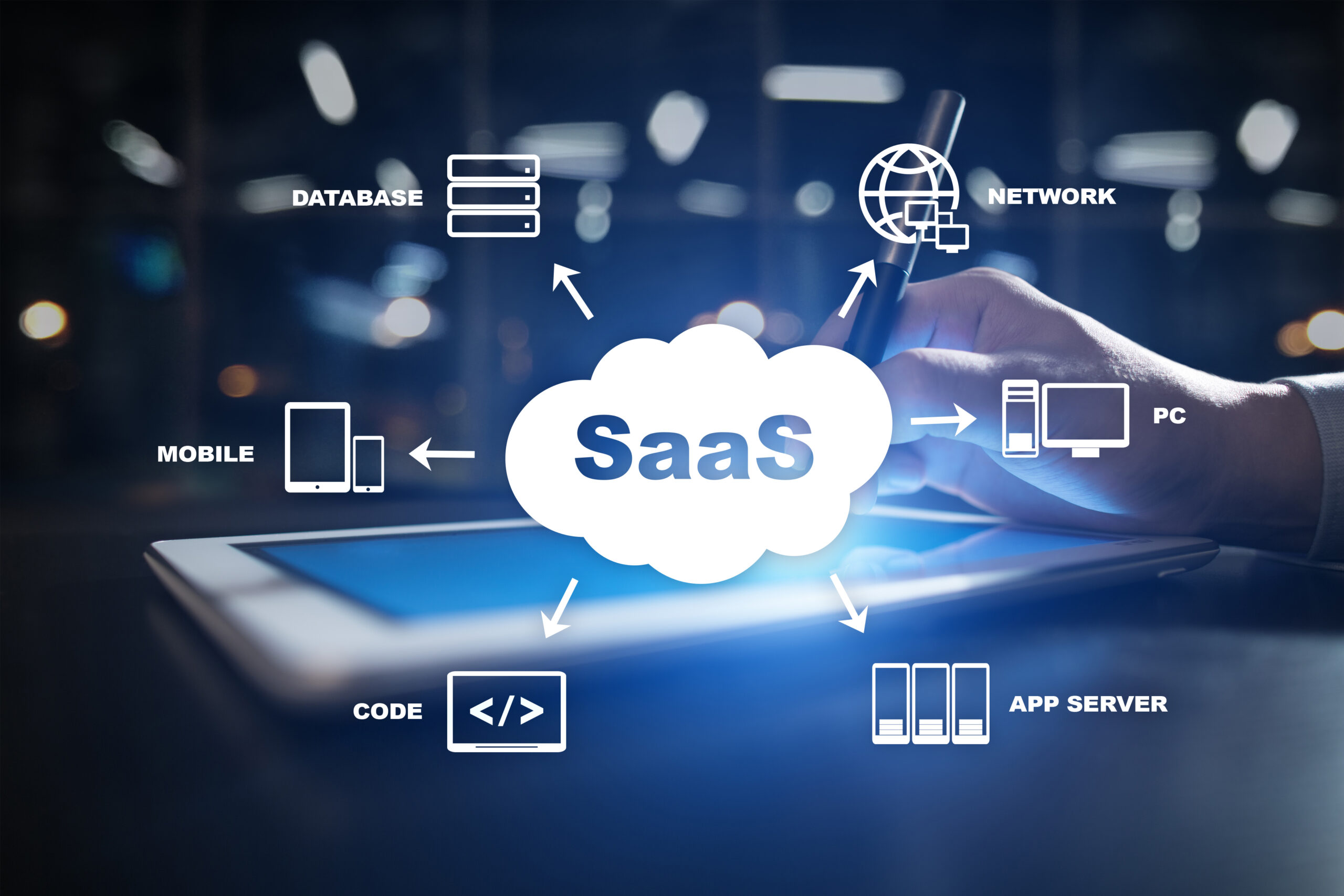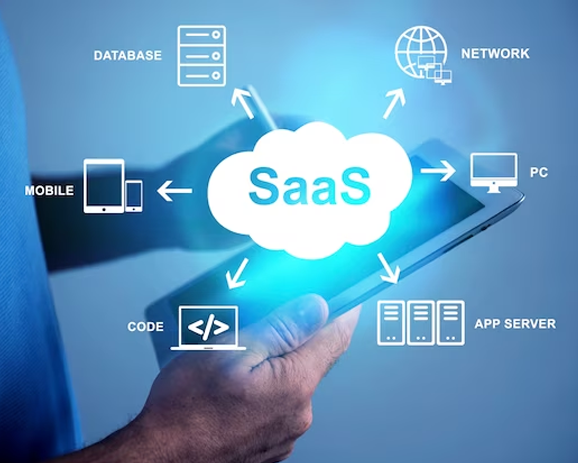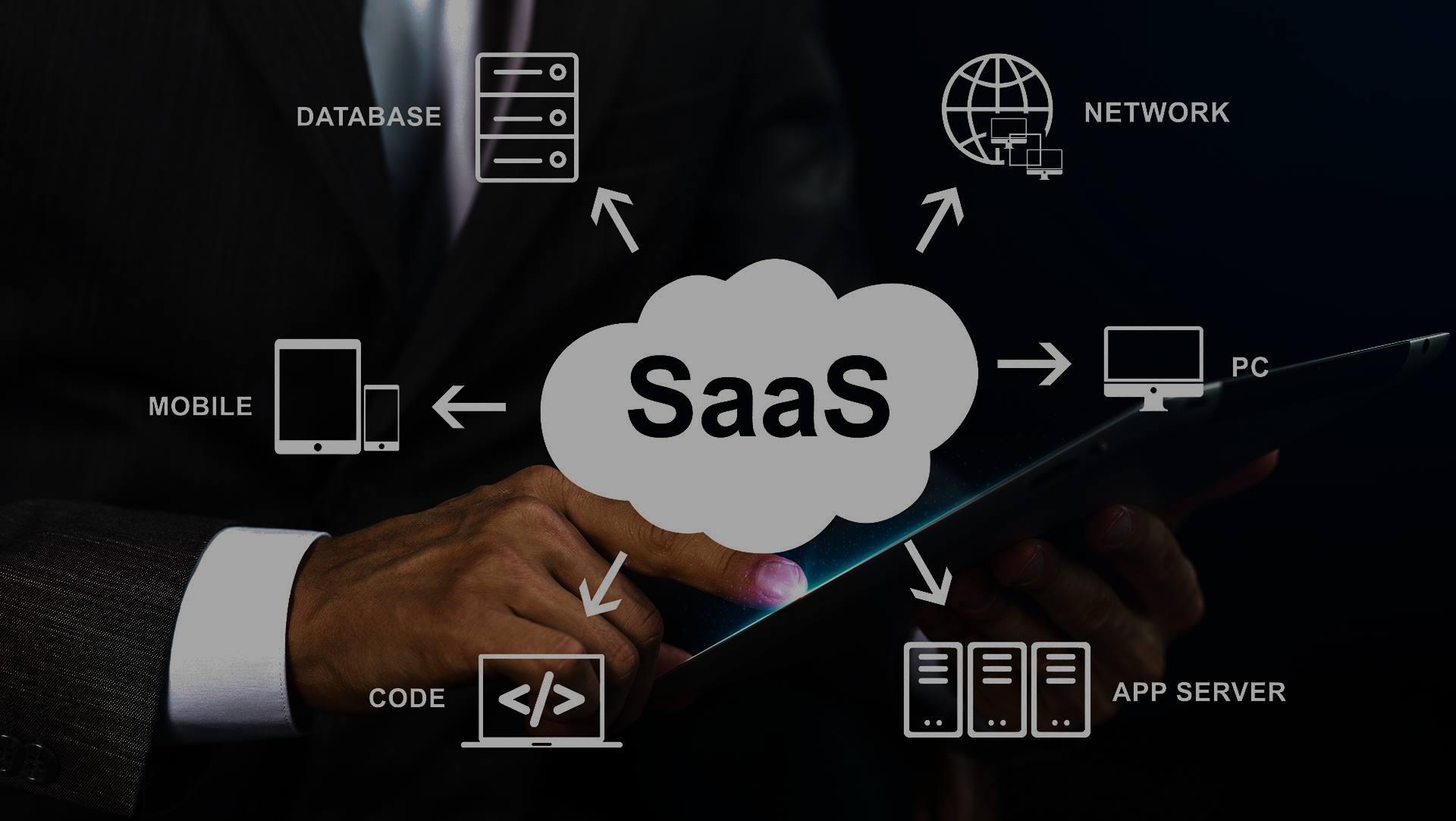Have you ever wondered how businesses keep their marketing efforts running smoothly without needing a whole IT department just for software? Well, it's almost certainly thanks to something called SaaS, or Software as a Service, and it is pretty much everywhere in the digital marketing world right now. This approach to getting and using software has really changed how companies, big and small, handle their online promotions and customer connections. So, if you are looking to get a better handle on modern marketing, knowing about SaaS is a good starting point.
For anyone involved with getting messages out to customers online, whether you are running a small shop or a bigger operation, the tools you pick make a real difference. SaaS offers a way to use powerful programs without the hassle of installing them or keeping them up to date on your own computers. It means you can focus more on your actual marketing plans and less on the tech stuff, which is a pretty good deal, you know?
This article will explain what SaaS means for digital marketing, why it matters so much, and what kinds of tools you might come across. We will also talk about how these services work and what to think about when picking them for your own needs. It is all about making your marketing work simpler and more effective, and that, in a way, is what many people are aiming for these days.
Table of Contents
- What Exactly is SaaS?
- Why SaaS Matters for Digital Marketing
- Key Benefits of Using SaaS in Digital Marketing
- Common SaaS Tools for Digital Marketers
- How SaaS Works in Practice
- Choosing the Right SaaS for Your Marketing
- The Future of SaaS in Marketing
- Addressing Common Questions About SaaS
What Exactly is SaaS?
Software as a service, often called SaaS, is a type of cloud computing where a provider gives you the use of application software. They also take care of all the physical and software needs behind it, so you don't have to worry about that part. This means the software itself lives on someone else's servers, and you just use it over the internet, which is pretty convenient, really.
You access these programs through a web browser, a mobile app, or maybe a simple desktop program that connects to the internet. It is a bit like streaming music or movies; you don't own the files, but you get to use them whenever you want, as long as you have a connection. This model has become super popular because it makes getting software a lot easier for everyone.
SaaS is essentially a software licensing approach where you pay a subscription to use the software. The software is hosted on external servers, meaning you don't need to install anything complicated on your own computer. This allows each user to access the program without needing to handle the technical details of keeping it running. SaaS products are completely managed by the provider, which takes a lot of weight off your shoulders, as a matter of fact.
You get to discover what SaaS is, how it functions, and its pros and cons without having to spend a lot of time on setup. This model also lets you examine SaaS architecture, security aspects, different vendor models, and pricing options, all from a user's point of view. It is a very hands-off way to get powerful tools for your business, you know?
Why SaaS Matters for Digital Marketing
For anyone involved in digital marketing, having the right tools is, you know, just so important. SaaS makes it possible for marketers to get their hands on very advanced software without the big upfront costs or the headache of maintaining it. This means even smaller businesses can use the same kind of powerful programs that bigger companies do, which is a pretty big deal.
These services help with so many parts of marketing, from sending out emails to managing customer information and even analyzing how well your campaigns are doing. They often bring automation to tasks that used to take a lot of time, freeing up marketers to focus on more creative or strategic work. That, in a way, is a huge benefit for productivity.
Think about it: instead of buying expensive software licenses and then needing someone to install updates or fix problems, you just pay a monthly or yearly fee. The provider handles all the technical stuff, so your team can just log in and start working. This makes it much simpler to try new tools and adapt quickly to changes in the market, which is something every marketer needs to be able to do, you know?
Key Benefits of Using SaaS in Digital Marketing
Using SaaS tools in your digital marketing efforts brings a lot of good things to the table. These benefits can really help a business grow and work more smoothly. It is, you know, a different way of thinking about software, and it offers some compelling advantages.
Easy Access, Anywhere
One of the biggest perks is that you can get to your marketing software from pretty much anywhere with an internet connection. Whether you are at the office, working from home, or even on a trip, your team can access the tools they need. This flexibility is very helpful for modern work setups, allowing people to collaborate easily, which is quite important.
Grow As You Need To
SaaS tools are usually built to be flexible. As your business gets bigger or your marketing needs change, you can often just adjust your subscription plan to add more users or features. You don't have to buy new software or upgrade your hardware, which makes growing your operations much simpler. This ability to scale up or down is, arguably, a massive plus.
Saving Money Over Time
Instead of a large upfront cost for software licenses and the equipment to run them, SaaS works on a subscription model. This spreads out the cost and often means a lower entry barrier for businesses. Plus, you save money on IT staff who would otherwise be needed to maintain the software and servers. It is, in some respects, a more budget-friendly approach for many companies.
No More Upkeep Worries
Remember how "My text" said "SaaS products are completely managed"? That means the provider takes care of all the updates, security patches, and server maintenance. You don't have to worry about software bugs or making sure your system is secure. This frees up your team to focus on marketing, not on tech support, which is a very welcome change for many.
Always Fresh Features
SaaS providers are always working to improve their products. New features and improvements are often rolled out automatically, without you having to do anything. This means you always have access to the latest tools and functionalities, helping your marketing stay current and effective. It is a bit like getting continuous upgrades without asking, which is pretty neat.
Common SaaS Tools for Digital Marketers
The variety of SaaS tools available for digital marketing is, you know, quite extensive. These tools cover almost every aspect of online promotion and customer interaction. Here are some common types you will find, each serving a distinct purpose in a marketing strategy.
Customer Connection Software
These programs help businesses keep track of all their interactions with customers and potential customers. They store contact details, communication history, and sales data, making it easier to manage relationships and personalize marketing messages. This is, in fact, a core tool for many businesses.
Email Sending Platforms
Marketers use these to create, send, and track email campaigns. They offer features like template builders, list management, and performance analytics. Sending out newsletters, promotional offers, or automated follow-ups becomes much simpler with these tools, which is, you know, very helpful for reaching a lot of people.
Search Presence Optimizers
These tools help websites show up higher in search engine results. They provide keyword research, site audits, competitor analysis, and backlink tracking. Improving your visibility online is a big part of digital marketing, and these tools are, arguably, essential for that work.
Social Media Helpers
Managing multiple social media accounts can be a lot of work, so these platforms help schedule posts, monitor mentions, and analyze engagement. They make it easier to maintain a consistent presence across different social channels and understand what your audience is responding to, which is pretty valuable.
Website Traffic Analyzers
These services collect data about who visits your website, what they do there, and where they come from. This information is crucial for understanding user behavior and optimizing your site for better results. Knowing your audience better is, basically, always a good thing for marketing.
Content Creation and Management Systems
From writing blog posts to creating visual content, these tools assist in the production and organization of your marketing materials. They might include features for collaborative writing, image editing, or even video production. Having a system for your content makes things run a lot smoother, you know?
How SaaS Works in Practice
When you use a SaaS product, you are essentially getting software delivered as a service, rather than buying it outright. As "My text" states, "Software as a service (saas) is application software hosted on the cloud and used over an internet connection by way of a web browser, mobile app or thin client." This means you don't install the main program on your own computer.
Instead, you usually sign up for an account, often on a subscription basis, and then log in through a website or a small application. The software itself lives on the provider's servers, which are often part of a vast network of computers known as "the cloud." This setup allows "Saas allows each user to access" the program from almost any device, anywhere, as long as they have an internet connection. It is, in a way, very flexible.
The provider takes care of all the technical stuff behind the scenes. This includes maintaining the servers, applying security updates, and making sure the software is always running. If there is a new version of the software, it is updated automatically by the provider, so you always have the latest features without doing anything yourself. This model also allows you to "examine saas architecture, security aspects, different vendor models and pricing options" from the user's perspective, without needing to be a tech expert yourself. It is, quite honestly, a very convenient way to consume software.
Choosing the Right SaaS for Your Marketing
Picking the best SaaS tools for your digital marketing can feel a little bit overwhelming, given all the options out there. But by thinking about a few key things, you can make choices that really fit your business. It is, you know, about finding what works for you, not just what is popular.
What Do You Really Need? First off, think about what problems you are trying to solve. Do you need to manage customer emails better? Are you struggling with social media scheduling? List out your main challenges, and then look for tools that directly address those. Don't get swayed by features you won't use; focus on your core needs, which is pretty sensible.
How Much Can You Spend? SaaS often involves monthly or yearly fees. Make sure the cost fits your budget, both now and as your business grows. Some tools have different pricing tiers, so you can start small and pay more as you need more features or users. It is, in fact, a good idea to plan for future costs.
Does It Play Well With Others? Consider if the new SaaS tool can connect with the other software you already use. For example, if you use a certain customer management system, can your new email marketing tool send data to it? Good integration means less manual work and more accurate information across your systems, which is, obviously, a big time-saver.
What Kind of Help Can You Get? If you run into a problem or have a question, how easy is it to get support? Look for providers that offer good customer service, whether through chat, email, or phone. Knowing you have help available can save a lot of frustration, and that, you know, is very important for smooth operations.
Is It Secure? Since you will be putting your business data into these tools, security is a big deal. Look for providers that have strong security measures in place to protect your information. They should be transparent about their security practices, which is, essentially, a sign of trustworthiness.
The Future of SaaS in Marketing
The way SaaS is used in digital marketing is always changing, and it is, frankly, getting more interesting all the time. As of late 2023 and early 2024, we are seeing some pretty clear trends that point to where things are headed. These developments are shaping how marketers will work in the coming years, which is something to keep an eye on.
One big area of growth is in how these tools talk to each other. Marketers want their email platform to connect seamlessly with their customer database, and their social media scheduler to work with their content creation tools. So, more and more, SaaS providers are focusing on making their products integrate better with other popular services. This means less jumping between different programs and a more connected workflow, which is, arguably, a real step forward.
Another significant trend involves using advanced computer programs to do more of the heavy lifting. Think about programs that can help you write marketing copy, suggest the best times to post on social media, or even personalize messages for individual customers based on their past actions. These capabilities are becoming more common in SaaS marketing tools, allowing marketers to be more efficient and effective. It is, like, a way to supercharge your efforts without needing a huge team.
Finally, there is a continued move towards making these tools even easier to use. Providers are working on simpler interfaces and more intuitive features, so marketers can spend less time figuring out the software and more time actually doing marketing. This focus on user experience means that powerful tools are becoming accessible to a wider range of people, which is, in a way, pretty cool. You can learn more about general cloud computing models, which SaaS is a part of, from sources like the National Institute of Standards and Technology, for instance, NIST Special Publication 800-145.
Addressing Common Questions About SaaS
People often have questions when they first come across SaaS in the context of digital marketing. Let's clear up some of the most common ones, which is, you know, always helpful.
What are examples of SaaS in marketing?
There are many examples, actually. Think about tools that help you send out mass emails, like popular email marketing platforms. Or services that let you schedule posts for all your social media accounts from one place. Customer relationship management (CRM) systems, which keep track of all your customer interactions, are also typically SaaS. Tools for optimizing your website for search engines, or platforms for managing your content, these are all common types of SaaS that marketers use every day. They are, essentially, everywhere you look in modern marketing.
How does SaaS benefit digital marketing?
SaaS brings a lot of good things to digital marketing. For one, it makes powerful software much more affordable because you pay a subscription instead of a big upfront fee. It also means you can access your tools from anywhere, which is great for flexible work. Plus, the provider handles all the updates and maintenance, so your team doesn't have to worry about the technical side. This lets marketers focus more on strategy and creativity, which is, quite simply, a huge advantage. You can learn more about digital marketing strategies on our site, and also explore more about how cloud services impact business growth.
Is SaaS good for small businesses?
Absolutely, yes, it is very good for small businesses. SaaS levels the playing field, giving smaller companies access to the same kind of sophisticated marketing tools that larger corporations use, but without the need for a big IT budget or dedicated staff to manage software. It is scalable, meaning you can start with a basic plan and add more features as your business grows. This makes it a very cost-effective and practical choice for businesses that are just starting out or have limited resources, which is, you know, pretty ideal for many entrepreneurs.



Detail Author:
- Name : Dr. Iliana Schuster IV
- Username : frederique05
- Email : earline.ritchie@rodriguez.net
- Birthdate : 1997-11-27
- Address : 81092 Leonor Unions Suite 398 Port Franciscomouth, RI 18090-7266
- Phone : (283) 329-3756
- Company : Daniel, Turner and Dickinson
- Job : Crane and Tower Operator
- Bio : Saepe provident odit velit est esse. Quod architecto voluptatem consequatur ut odio nihil sit. Consequatur id recusandae consequatur. Commodi vel exercitationem magnam placeat nesciunt vitae.
Socials
linkedin:
- url : https://linkedin.com/in/wilkinsonn
- username : wilkinsonn
- bio : Ut rerum voluptates iure quia et dignissimos.
- followers : 499
- following : 1463
twitter:
- url : https://twitter.com/wilkinsonn
- username : wilkinsonn
- bio : Dolores voluptatem dignissimos nisi eos enim enim enim. Esse nesciunt alias exercitationem tempore hic ut. Assumenda et debitis quo cupiditate iste architecto.
- followers : 3435
- following : 1490